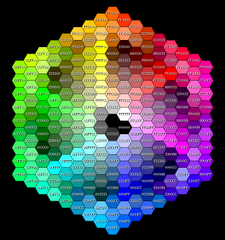Curating Care Commoning coop (CCCcoop)
COMMON
>>belonging to or shared by two or more people, or things
COMMONS
>>time and space of struggle for...
## In what way does curating as practice contribute to making of commons?
##What becomes of curating when it is part of commons making?
Posthuman Commons, Coco Solfrank interviews Magda Tyzlik-Carver
CASE STUDIES:
(add title of the project, curators, short description, representative image + url)
>>>>>>>>>>>>>>>>>>>>>>>>>>>>>>>>>>>>>>>>>>>>>>>>>>>>>>>>>>>>>>>>
COLLECTIVE GLOSSARY
(add definition, date and author name and url + your name avatar)
>>>>>>>>>>>>>>>>>>>>>>>>>>>>>
(RE)SOURCES:
#3
OPEN SCORES: How to program the Commons
21 September – 12 October 2019
panke.gallery, Berlin
Curated by Creating Commons (Shusha Niederberger, Cornelia Sollfrank, Felix Stalder)
This exhibition brings together 16 practices through which artists articulate their own forms of (digital) commons. From online archives, to digital tools/infrastructure and educational formats, the projects envision a (post-)digital culture in which notions of collaboration, free access to knowledge, sustainable use of shared resources and data privacy are central.
>>>>>>>>>>>>>>>>>>>>>>>>>>>>>>>>>>>>>>>>>>>>>>>>>>>>>>>>>>>>>>>>

#1:
The Embroidered Digital Commons
since 2008
workshops and exhibitions in different venues
Curated by Ele Carpenter
The Embroidered Digital Commons (EDC) is a collective close-reading and close-stitching of a text written by Raqs Media Collective called 'A Concise Lexicon of / for the Digital Commons' (2003). The full lexicon is an A-Z of the relationship between social, digital and material space. The lexicon weaves together an evolving metaphorical language of common ownership, common use and access across digital platforms. The commons has become synonymous with digital media through the discourse of free and open source software, shared production of knowledge, open access, and creative commons. The digital commons is a response to the inherent 'copy n paste' reproducability of digital codes, scripts, and files and the cultural forms they support.
Embroidery is a slow craft, and the project has been running for over ten years as and when people feel inspired. The project began in 2008 as part of the Open Source Embroidery project facilitated by Ele Carpenter and exhibited at Bildmuseet, Umea University, Sweden, and the Museum of Craft and Folk Art in San Fransico. Workshops have taken place at conferences, exhibitions and online, and a full list of the project partners and stitchers can be found on the credits page.
>>>>>>>>>>>>>>>>>>>>>>>>>>>>>>>>>>>>>>>>>>>>>>>>>>>>>>>>>>>>>>>>
Embroidered Digital Commons: Participatory Production and Distribution, Keynote by Ele Carpenter, FAD Barcelona, 2012

#2:
common practice/language
June, 2010
common practice/code
September, 2010
Arnolfini, Bristol, UK
Curated by Magdalena Tyżlik-Carver co-developed with Sönke Hallmann
common practice is a reading group that uses Wiki and Skype to perform a Calvino-style manipulation of texts. Through unpredictable cobbling together of texts, poetry, people, code, language, Wiki, chat, conversations etc. we will co-produce untagged and free style body/ies of knowledge.
>>>>>>>>>>>>>>>>>>>>>>>>>>>>>>>>>>>>>>>>>>>>>>>>>>>>>>>>>>>>>>>>
common practice: there is nothing new under the sun
January 2013, Transmediale, Berlin co-developed by Magdalena Tyżlik-Carver, Marcello Lussana and Tobias Muntzer
Common practice at Transmediale was an experiment into language and code,and doing things with people, machines and software. This experiment run for the duration of the festival and was also a beta testing of the platform which included collaborative practices between wiki, software called IRK.a and human participants. Referencing the BWPWAP theme of the Transmediale festival, the project invitated to process/discuss/research together the idea that THERE IS NOTHING NEW UNDER THE SUN (TINNUTS).
>>>>>>>>>>>>>>>>>>>>>>>>>>>>>>>>>>>>>>>>>>>>>>>>>>>>>>>>>>>>>>>>
Common practice is a curated space run by software, machines and people and dedicated to experiencing and promoting language and code as common practice. Common practice is partly automated and partly human executed and is the result of bringing together number of elements including people, computers, software, wiki, irc channel, literature, commands, institutions, individuals, practices and many others.
The project is inspired by previous, present and future works, collaborations, conversations, disagreements and provocations.
Art & Speculative Commons, talk by Cornelia Solfrank, Hexagram 2017
COMMONS / COMMONING / COMMUNITY OF COMMONERS / RESOURCES
commoning
Reference for the diagram, paper by Bruno Latour:
http://www.bruno-latour.fr/sites/default/files/155-GAIAGRAPHY-accepted.pdf
What code of conduct do we need to hold non-human and computational agents accountable? How their agency filters in the construction of the commons? This book offers some insights into the question.
who are the others in common?
El Paquete Semanal
Julia Weist and Nestor Siré, Holguín (BABALAWO), 2016 (still). Courtesy the artists. (from Gaia's presentation)